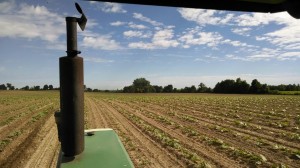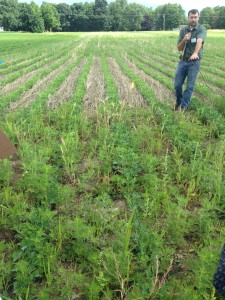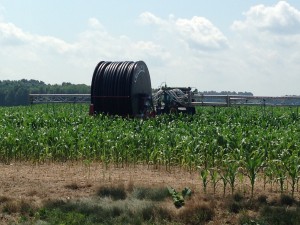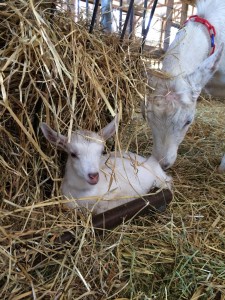As the planting season winds down the seemingly never ending task of keeping the crop healthy and growing begins to take the majority of the work day. Everyday there is at least one person cultivating crops like cabbage, squash, or cauliflower and another spraying foliar nutrient applications, fungicides, insecticides,
or some combination. Pre-plant fertilizing is done, for the most part, and instead fertilizer is applied as a topdress or sideress application. If I wasn’t doing any of those things, I was preparing for harvest with tasks like cleaning out storage barns or getting refrigeration units in shape. I am always amazed how there is always something important to do.
The first time I cultivated was an experience for sure. I was sent to a field in my no-cab tractor with a three row cultivator hitched to the back. For those of you who don’t know, a cultivator is effectively a series of shanks which rip through the soil on either side of the crop row, killing the weeds but leaving the crop alone, ideally. The cultivator as configured for squash on five feet centers, so there was some leeway for error, but not much. This field was a sandy soil and a side-hill. This environment meant that the back of the tractor slid downhill as I drove along, in addition, the cultivator itself was able to shift on the back. All these factors combined to me driving the tractor at a slight angle with the front wheel just shy of the row to the right in order to avoid hitting the row to the left.
As the ground leveled outI had to steer the tractor back towards the center, to avoid running downthe crop to the right. The entire time I had to watch the cultivator on the back, the front tire, and what the row was about to do, this meant that I had to look back and forth over my my shoulder and then forward. After a couple of twelve hours day of that I was sore and tired of looking at endless rows of young squash.
On my second day of cultivating I learned that you do not joke about the health of a farmer’s plants. I noticed a part on the cultivator which set the depth was missing, so I was burying every third row. I asked Rick to bring out a replacement, and when he got there he asked what the damage was from my cultivating. I responded that I had left more standing than I knocked down and you would have thought I told him that I was aiming at the crop and not the weeds. Needless to say I did not make any jokes like that again.






























